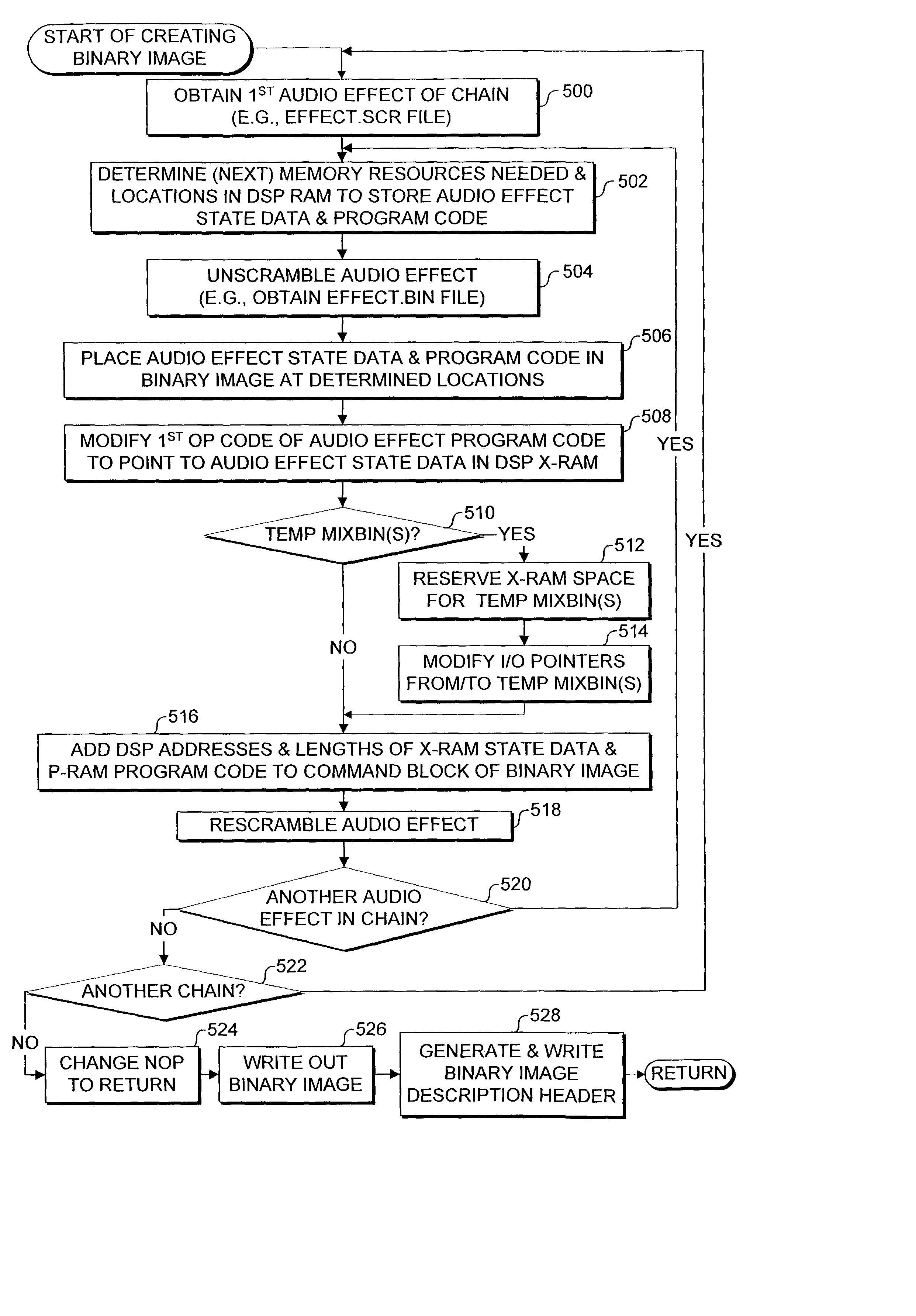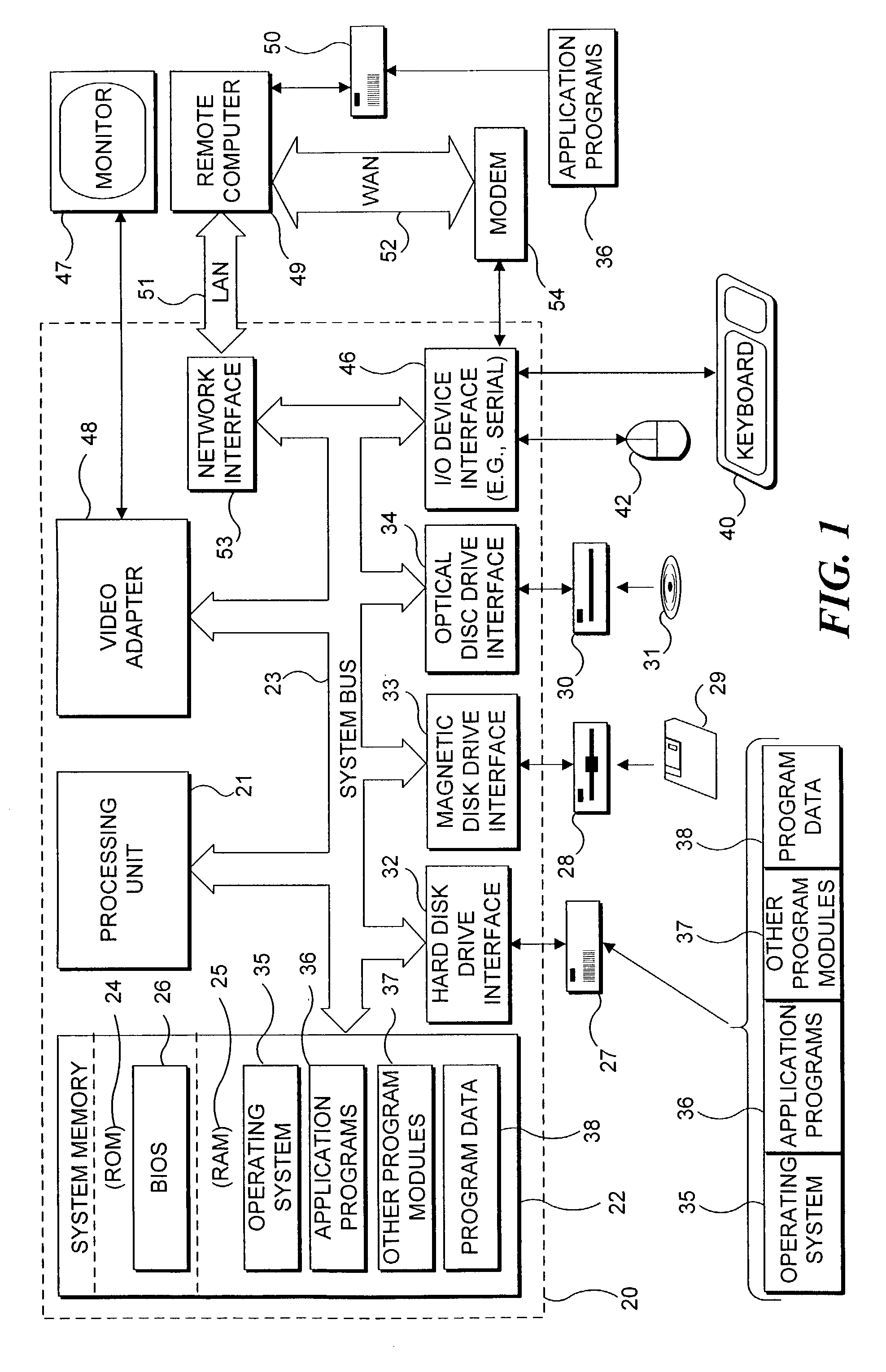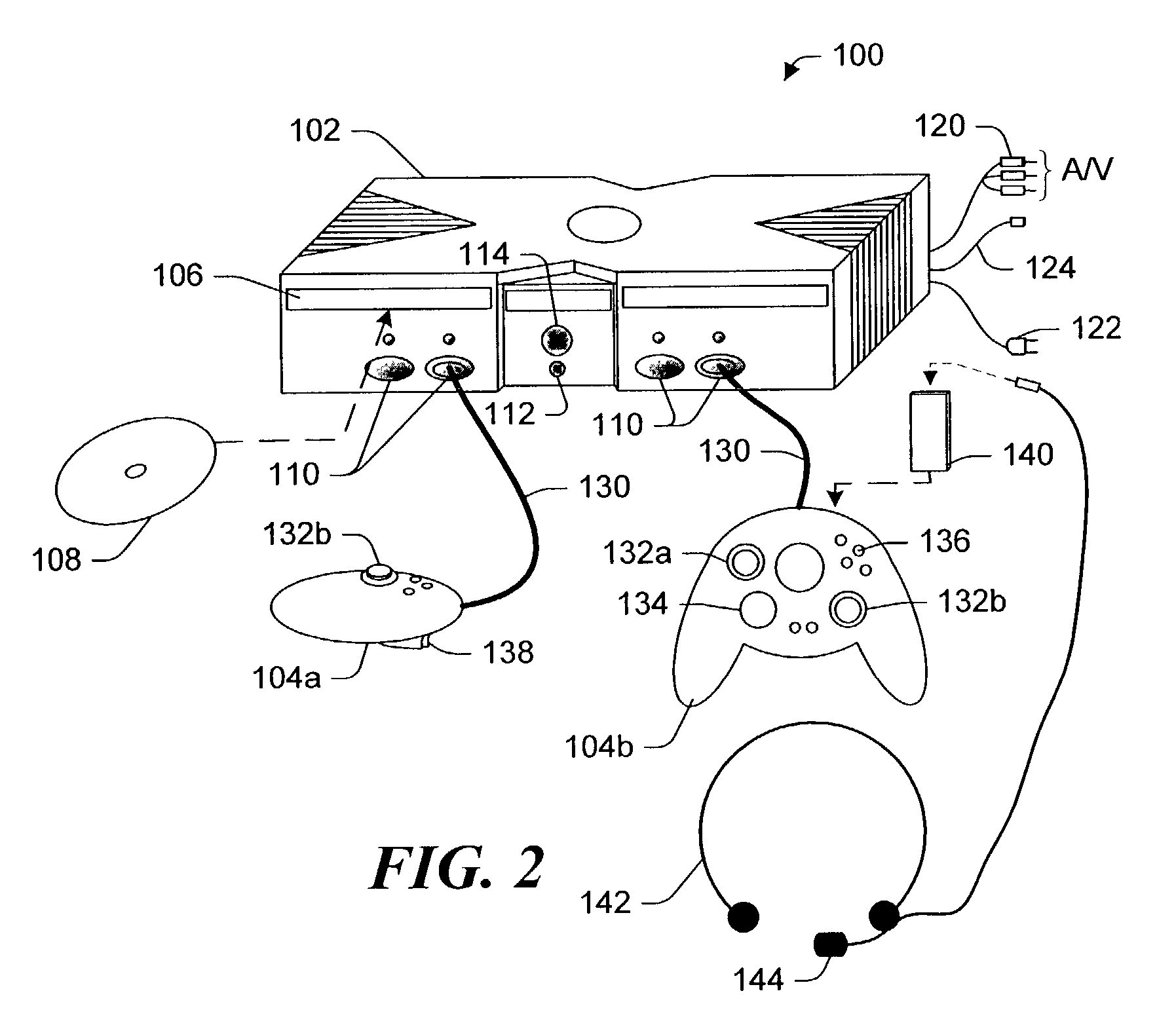Infrastructure for generating a downloadable, secure runtime binary image for a secondary processor
a secondary processor and binary image technology, applied in interprogram communication, multi-programming arrangements, instruments, etc., can solve the problems of difficult writing, limited flexibility, and limited throughput speed,
- Summary
- Abstract
- Description
- Claims
- Application Information
AI Technical Summary
Benefits of technology
Problems solved by technology
Method used
Image
Examples
Embodiment Construction
[0030]A preferred embodiment of the present invention is described below in regard to an exemplary use in preparing audio effects on a personal computer and for performing the audio effects with a DSP on an electronic gaming system that is designed to execute gaming software distributed on a portable medium, such as a digital versatile disk (DVD). Those skilled in the art will recognize that the present invention may also be implemented in conjunction with a set-top box, an arcade game, a hand-held device, and other systems that utilize a secondary processor, such as a DSP. It should also be apparent that the present invention may be practiced on a single machine, such as a single PC, or practiced in a network environment, with multiple consoles or computing devices interconnected in peer-to-peer arrangement and / or with one or more server computers.
Exemplary Development Environment
[0031]FIG. 1 and the following discussion are intended to provide a brief, general description of a sui...
PUM
 Login to View More
Login to View More Abstract
Description
Claims
Application Information
 Login to View More
Login to View More - R&D
- Intellectual Property
- Life Sciences
- Materials
- Tech Scout
- Unparalleled Data Quality
- Higher Quality Content
- 60% Fewer Hallucinations
Browse by: Latest US Patents, China's latest patents, Technical Efficacy Thesaurus, Application Domain, Technology Topic, Popular Technical Reports.
© 2025 PatSnap. All rights reserved.Legal|Privacy policy|Modern Slavery Act Transparency Statement|Sitemap|About US| Contact US: help@patsnap.com



